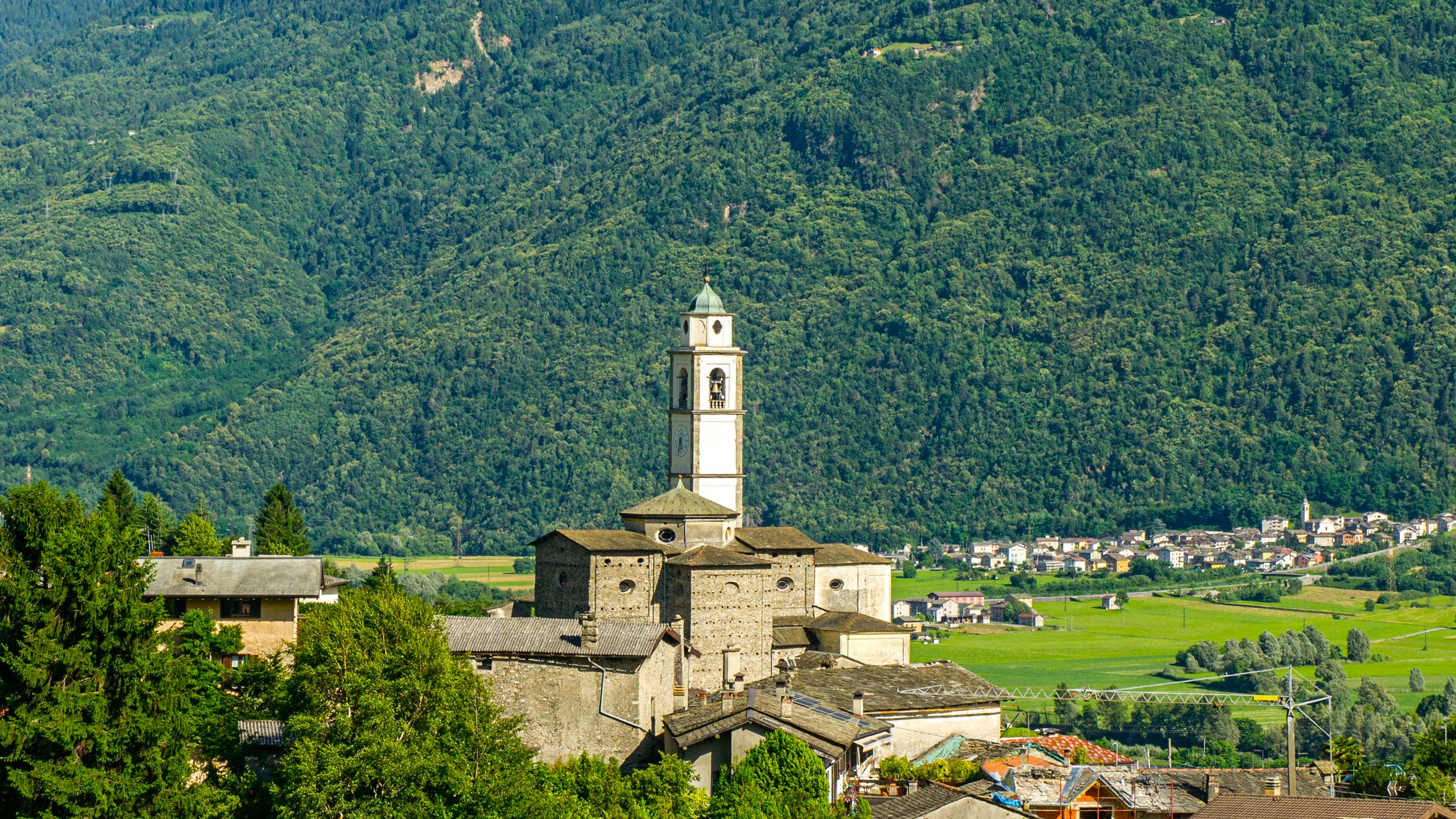Via alla Chiesa, 180, 23010 Berbenno di Valtellina SO
In the Middle Ages, Berbenno was the seat of an extended parish. Local religious life gravitated around the baptismal church of Saints Peter and Paul, located on the valley floor near one of the few bridges across the Adda.
The area, however, was subject to the whims of the river and in the late Middle Ages people began to prefer the Romanesque church of Santa Maria, closer to their dwellings and protected by the now-lost castle of Roccascissa.
A manse for the archpriest and clergymen was built next to the church with a deep cellar for wine and winemaking: a very necessary feature in a territory historically dedicated to viticulture. Still today the terraces of Maroggia—an old hamlet that has given its name to a famous wine—testify to the systematic reworking of the soil by Benedictine monks from the village of Monastero.
Small and deteriorated, in the 17th century the old church was replaced by a larger one with a single nave and a new orientation to better suit the local topography: the presbytery stands on the most exposed point of the outcrop; the façade faces the houses and has a portico that continues around the side to the oratory of San Carlo Borromeo, seat of the Confraternita del SS. Sacramento.
The wooden doors of the main portal (1714) are some of the most beautiful in the province of Sondrio. Above the door, the image of Our Lady of the Assumption reminds us who the church is dedicated to.
Dating to 1648 and crafted by Giovanni Schmitt of Leipzig, the inlaid choir stalls have always been a source of pride for the people of Berbenno.
The statue of the Nursing Madonna and the paintings on the side walls of the presbytery—a gallery fully worthy of study, starting with the enormous Annunciation—are surviving elements of the former furnishings.
The middle chapel on the right features a lovely statue of Our Lady of the Rosary, whose flowery clothes appear moved by the wind, a typical 18th-century artistic stratagem.
In 1780 the building was increased in height, given a vaulted ceiling and a transept with a cupola at the intersection of the arms. The ambitious project was in the hands of two men from Ticino: the foreman Girolamo Galletti and the painter Giovan Battista Colombo, author of the four Evangelists (1791) frescoed on the pendentives of the cupola.
Modernizations in the 18th century also regarded the clergy house and the bell tower, which was built in two phases (1722, 1770). By the end of the 18th century, the complex had gained in grandeur and was even more visible from the valley floor, standing in a solitary position aligned with the old parish church on the valley floor.







